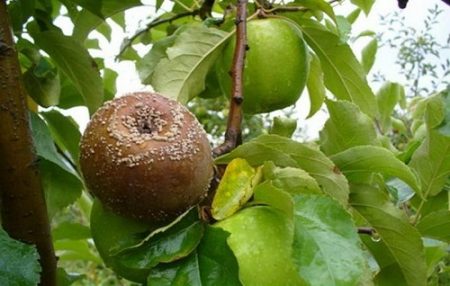 Planting apple trees in his garden, everyone wants to not only visually enjoy a beautiful tree with a luxurious crown and a cozy, cool shade that it creates, but also to feast on natural home-made bulk apples.
Planting apple trees in his garden, everyone wants to not only visually enjoy a beautiful tree with a luxurious crown and a cozy, cool shade that it creates, but also to feast on natural home-made bulk apples.
But, unfortunately, a good harvest of apple trees cannot be achieved if the tree is attacked by diseases, with which it is imperative to begin the fight at the first sign. Apple tree diseases and the fight against them will become easier if you look at the photo and find out what kind of disease. Fungal diseases and bacterial diseases can attack the apple tree, each of which has its own distinctive signs. Consider the most characteristic diseases of the apple tree and methods of dealing with them, as well as a photo of what this disease is. After all, in order to overcome the enemy, you need to know him in person!
What diseases can attack the apple tree
Diseases of this group develop due to the appearance of different types of fungi on the plant. Most often, when it comes to apple trees, such diseases are encountered.
Brown spotting
A disease that appears towards the end of the summer period. Visually recognizing it is very simple: on the leaves of the tree appear dark brown, burgundy spots with blurry edges in the form of a border. The fungus, the causative agent of this disease, hibernates in fallen leaves, and by the end of summer, when the humidity rises, it moves to the foliage.
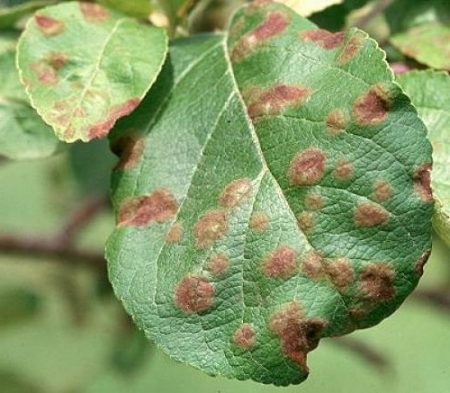
Milky shine
Another disease that manifests itself visually on the leaves of an apple tree. The leaves of the tree are covered with milk paint, which gleams a little. It is the pathogen that creates such a flicker. The disease is dangerous because it is impossible to harvest because of it: the fruits either do not form at all, or do not stay on the branch for a long time.

Powdery mildew
One of the most common fungal diseases that can occur if an apple tree grows in the garden. It appears in the form of a grayish coating on the leaves, twigs, flowers of the plant. Spores of the fungus can penetrate into the plant, thereby not leaving him a chance for full development. If the tree was affected by this disease, then the formed fruits wrinkle and dry out, or do not form on the branches at all, and the tree remains “bare” all season.
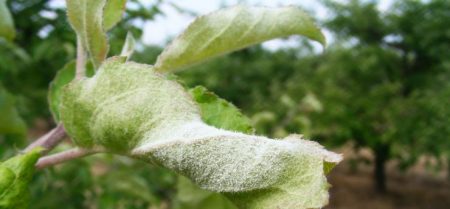
Powdery mildew can be overcome as follows: colloidal liquid sulfur is acquired, and a two-percent solution sprayed buds, and with a one percent solution - ovaries. Processing should be repeated after a couple of weeks using Bordeaux liquid or copper sulfate. Also, powdery mildew pathogen dies at low temperature minus 27 degrees or more.
Common cancer
This disease manifests itself on the bark of a tree, in places of cuts after pruning, or in cracks after frost, or in the place of traces of a rodent bite. A damaged tree can become infected if the temperature in the yard varies from 2 to 30 degrees Celsius, that is, in spring, summer and early autumn. Due to the disease, the plant does not receive full nutrition, its bark and branches begin to dry, and then die off, the trunk is overgrown with growths.

The tree can be cured like this: all affected areas of the tree must be cut, and the cut points treated with copper sulfate so that ordinary cancer again could not "pounce" on the exhausted tree. On top of copper sulphate, it is necessary to spread with garden varnish or oil paint. And so that in winter, the bark could not be damaged by hares, you should wrap it with corn tops.
Cytosporosis
Like ordinary cancer, this disease affects the bark and trunk of an apple tree. But visually, these two diseases are different: cytosporosis appears as rusty-brown spots. The affected areas of the cortex resemble a washcloth. You can cure the disease by whitening the trunk and branches of the tree with lime with copper sulfate. It is possible to produce whitewashing of a tree with the goal of preventing the disease.
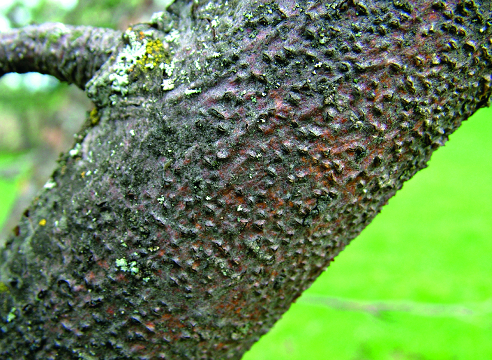
Black cancer
It affects the bark, and in appearance resembles cytosporosis. But, with black cancer, the affected bark begins to exfoliate, dividing the tree trunk unprotected from external factors. Black spots appear on the trunk first, then indentations. Apples begin to blacken and rot.

Scab
Parasha is a disease that attacks the apple tree more often than others. Despite the fact that the disease is not capable of destroying the plant, the eye inflicts invaluable damage to the crop. First, the disease manifests itself on the inside of the leaves in the form of brown spots with a greenish tint. Then spots also appear on the fruits, eventually acquiring a tough black crust. In winter, the fungal source of the disease lurks in fallen leaves, and if the summer is wet and moderately warm, it becomes more active.
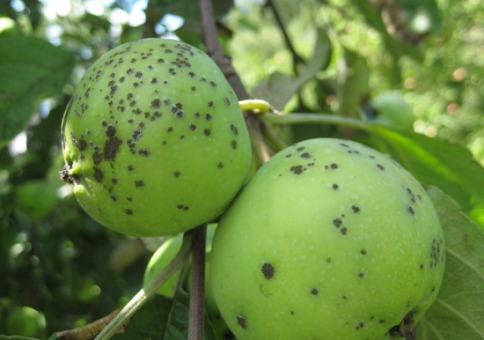
Therefore, it is necessary to remove excess branches, fallen apples, and in the autumn burn them along with fallen leaves. In autumn, the bark of the tree should be sprayed with copper sulfate, and in the spring, before the buds begin to bloom, with Bordeaux liquid. In autumn, the tree can be treated with a solution of nitrate with urea. Correct apple planting patterns in the fall.
Moniliosis
It manifests itself on almost ripened fruits in the form of brown spots, which over time become more and more. The pulp of the fetus becomes soft, loose, acquires a dark shade, not to mention the fact that the affected fruits have a very specific taste. Part of the fruit quickly falls, while the other part is stony. The fungus multiplies during the storage period of the fruits, and hibernates in fallen fruits. Therefore, the main preventive measure in this case is the collection of all fallen fruits in the autumn and their processing.
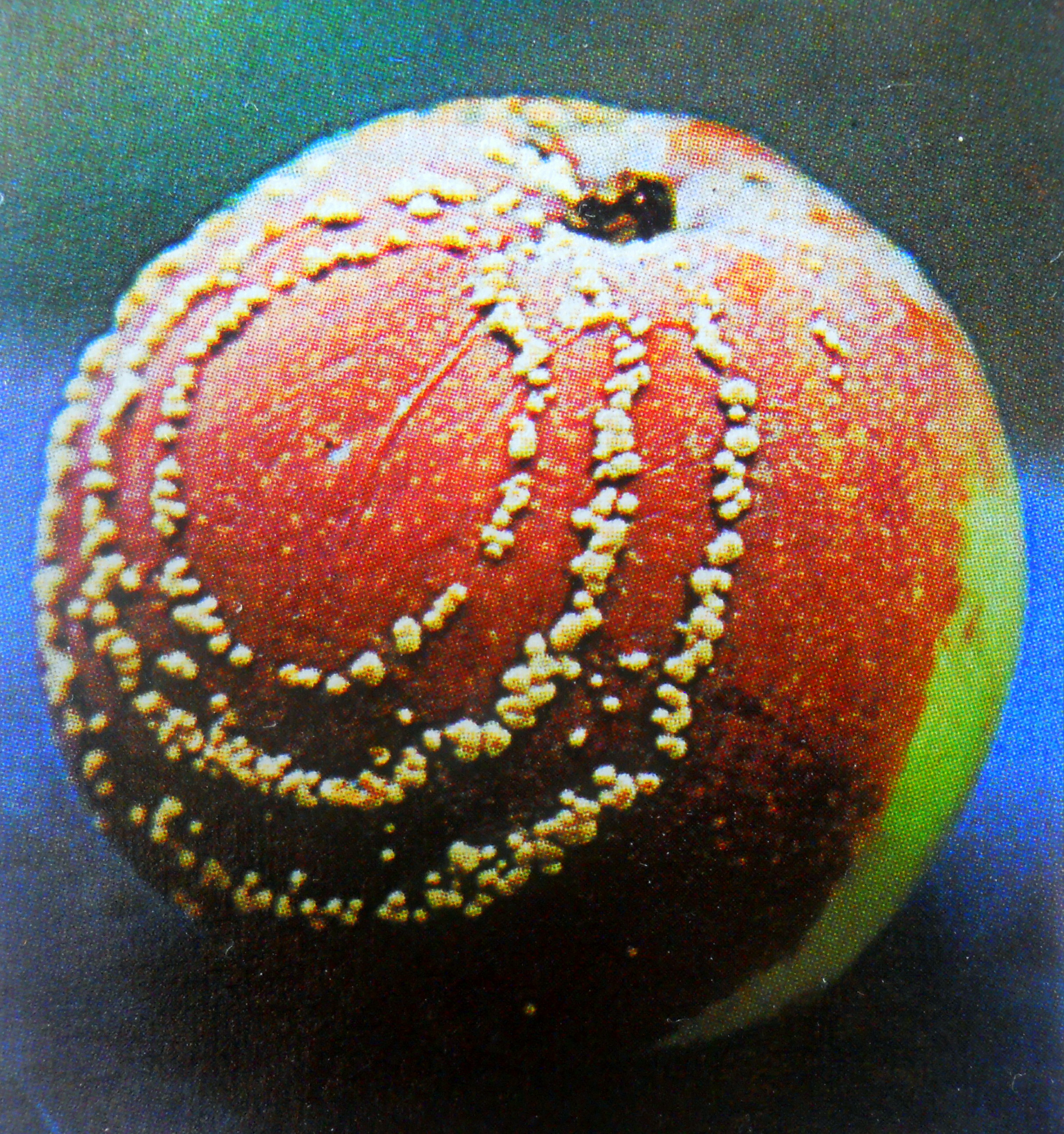
Root cancer
The most dangerous disease for the apple tree, which will certainly lead to the death of the entire plant. Unfortunately, root cancer can only be detected when the tree stops growing or develops poorly. In such cases, plants must be dug up. Digging up plants, you can consider the roots: in case of root cancer, growths will be visible on them, in which bacteria accumulate. Bacteria can attack the tree only if the roots have been damaged, since the pathogens themselves live in the soil. Most often, bacteria are introduced into the soil along with planting material.

Knowing the diseases of the apple tree and methods of dealing with them, and having studied the photo of how they look, you can save your garden, and also make sure that the tree grows healthy in the future and brings a rich harvest.
Preventative measures
Whatever the signs of the disease, as soon as they begin to externally manifest themselves, it is necessary to immediately begin treatment and prevention. For various diseases, drugs such as:
- "Nitrofen" - effectively copes with powdery mildew and scab. The tree must be processed three times, it is also possible to prevent: before flowering, after flowering, and 18 days after the last treatment.
- "Sulfaride" - helps to cope with any disease, especially effective in the case of powdery mildew.
- "Hom" - will be useful and will help cure the tree with cytosporosis.
- “Abiga-Peak” and “Alirin-B” - apply if the tree was attacked by scab.
If you take care of processing the apple tree in the spring in time, you can avoid many diseases in the future. It is not necessary to buy all the preparations for apple diseases, but having some of them in reserve will still not be amiss. It is most profitable to buy those drugs that are suitable not only for the treatment of diseases of apple trees, but which can also be used for prevention.

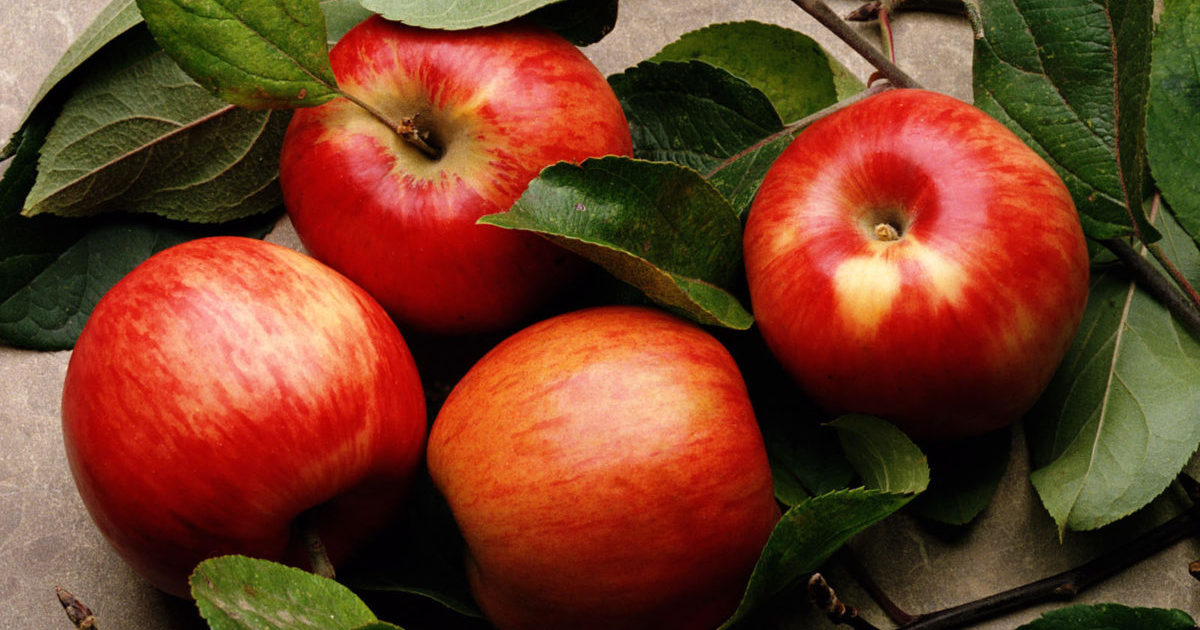
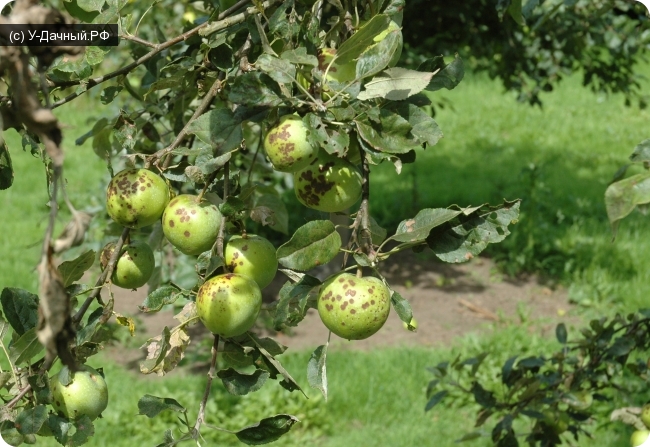
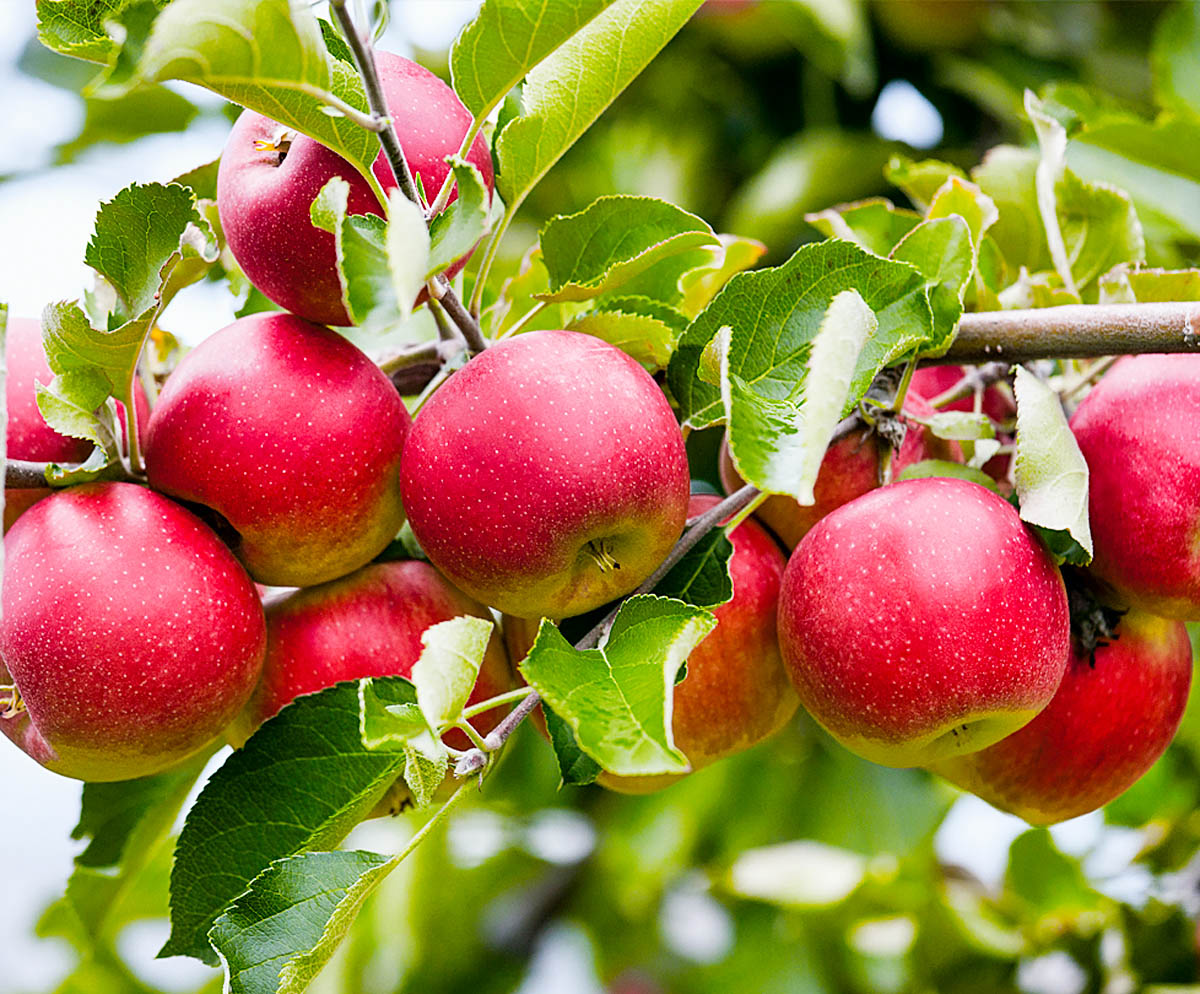
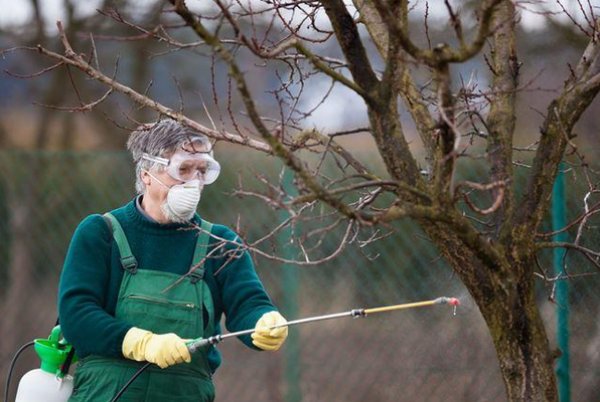 Autumn processing of apple trees from pests and diseases: how to spray, terms
Autumn processing of apple trees from pests and diseases: how to spray, terms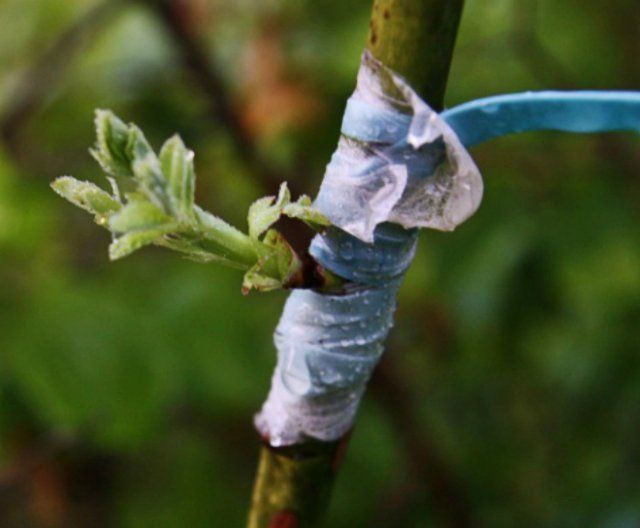 How to plant an apple tree in the fall
How to plant an apple tree in the fall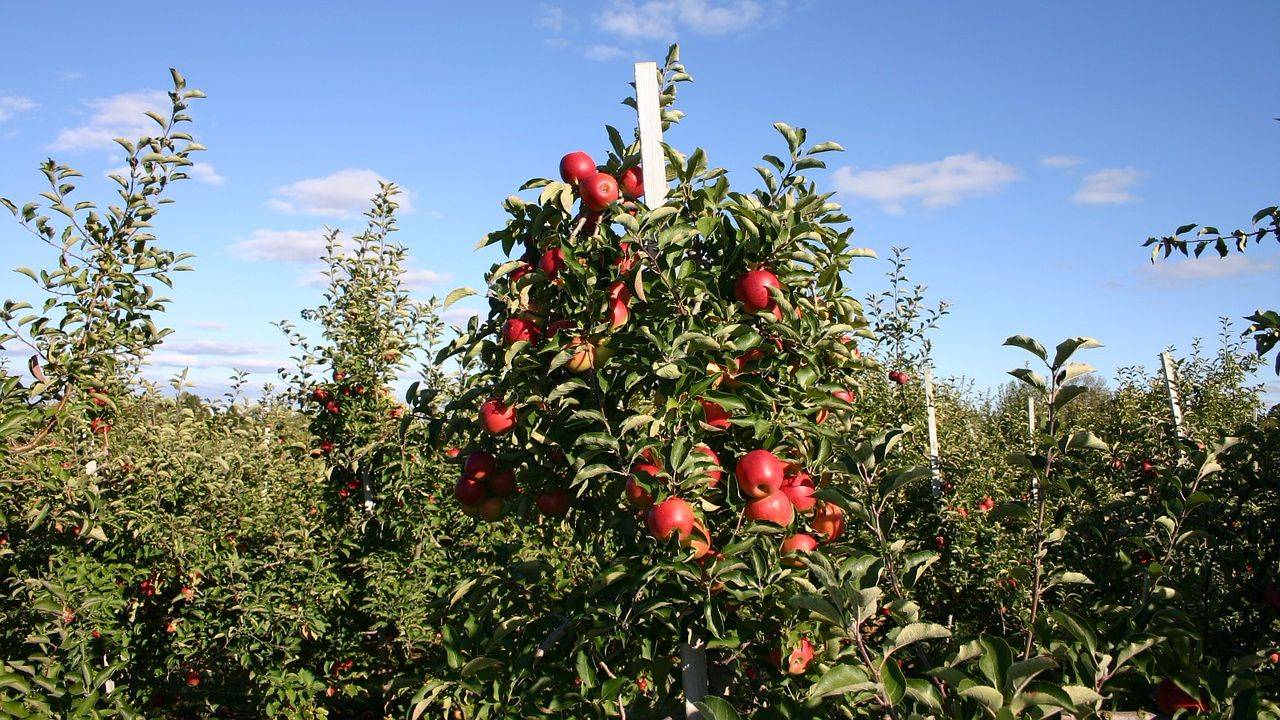 How to prune a columnar apple tree in autumn: features, timing, patterns
How to prune a columnar apple tree in autumn: features, timing, patterns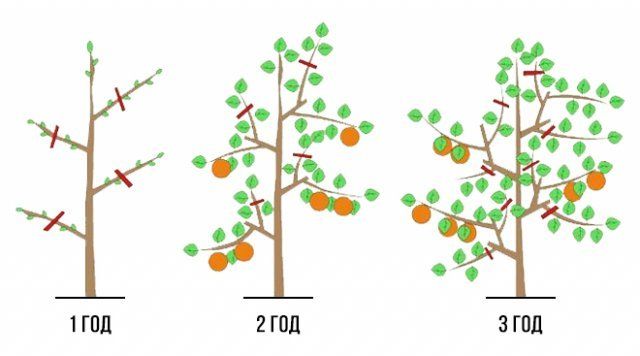 Autumn apple pruning scheme for beginners
Autumn apple pruning scheme for beginners